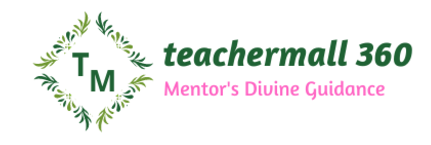Dealing with clogged drains may be frustrating, whether or not it’s a slow drain in your toilet sink or a full-blown blockage that backs up your kitchen sink. Drain clogs are a standard household challenge, and though some can be remedied with a simple DIY approach, others might require professional help. Hiring a plumber for drain cleaning is a clever decision in sure situations to ensure your plumbing system runs smoothly and efficiently. But what should you count on while you hire a plumber for this job? Here’s a breakdown of what to anticipate throughout the process.
1. Initial Contact and Scheduling
Step one in hiring a plumber for drain cleaning is reaching out to a plumbing service. Most plumbing corporations supply multiple ways to contact them—whether through phone calls, online booking, or even mobile apps. Once you first speak to the plumber, be ready to describe the issue in detail. Clarify whether or not the problem is with a single drain or if a number of drains in your house are affected, as this will help them determine the severity of the clog.
Scheduling a plumber is usually straightforward. Reputable plumbing companies typically offer versatile scheduling to accommodate their clients, together with emergency services for critical blockages. In some cases, the plumber may provide a quote or estimate for the drain cleaning service over the phone based mostly on the information you’ve shared.
2. Assessment and Inspection
As soon as the plumber arrives, the primary thing they will do is assess the situation. This initial assessment helps them understand what’s inflicting the blockage and how finest to address it. Depending on the severity of the clog, they may ask you questions about when the issue started, whether or not you’ve tried any DIY methods to clear the drain, and in the event you’ve noticed any associated problems, like unpleasant odors or uncommon noises.
In more complicated cases, the plumber would possibly use advanced tools like a drain camera to inspect the pipes and get an in depth view of what’s occurring inside. Drain cameras permit the plumber to see deep into the pipe and find the exact cause of the clog, which could be anything from a buildup of grease, hair, or soap scum to tree roots or overseas objects. This step is particularly helpful when dealing with recurring clogs or blockages in hard-to-reach areas like the principle sewer line.
3. Selecting the Right Methodology for Cleaning
After the assessment, the plumber will select essentially the most appropriate methodology for cleaning the drain. There are several methods that plumbers use for drain cleaning, depending on the severity of the clog and the type of pipes in your house:
Plunger or Hand Auger: For minor clogs, plumbers would possibly use a plunger or hand auger (additionally known as a drain snake) to manually dislodge the blockage. This is usually efficient for small, localized clogs in sinks, bathtubs, or toilets.
Motorized Drain Snake (Electric Auger): For more cussed clogs, a motorized drain snake may be used. This tool is more powerful than a hand auger and may reach deeper into the pipe to break up or pull out the obstruction.
Hydro Jetting: In cases the place a clog is caused by intensive buildup of debris like grease, scale, or sludge, plumbers could use a hydro jetting system. This method uses a high-pressure stream of water to blast away the debris and clean the inside of the pipes thoroughly. Hydro jetting is particularly effective for large or recurring clogs in primary sewer lines.
4. Post-Cleaning Inspection and Preventive Measures
After the clog is cleared, the plumber might conduct a submit-cleaning inspection to make sure that the drain is absolutely cleared and that there are not any additional points that must be addressed. This may contain another look with a drain camera or running water through the pipe to check for any lingering blockages.
Plumbers will also offer advice on how one can forestall future clogs. Common recommendations embrace using drain screens to catch debris like hair and meals particles, avoiding pouring grease down the kitchen sink, and scheduling regular professional drain cleanings for those who live in an older home or an area with hard water that causes mineral buildup.
5. Prices and Final Steps
The cost of hiring a plumber for drain cleaning varies depending on several factors, such as the severity of the clog, the tools used, and whether any additional services (like a camera inspection) have been necessary. Simple clogs might be relatively cheap to fix, while more complicated issues that require hydro jetting or sewer line cleaning might cost more. It’s a good idea to ask for an estimate earlier than the plumber begins work to avoid any surprises.
Most plumbers will supply some form of assure or warranty on their services, giving you peace of mind that the problem has been resolved effectively. Before the plumber leaves, they’ll typically supply tips for sustaining your plumbing system and stopping future blockages.
Conclusion
Hiring a plumber for drain cleaning is a smart selection when confronted with stubborn clogs or recurring drainage issues. From the initial inspection to the ultimate clean-up, a professional plumber can quickly assess the situation, select essentially the most appropriate technique for clearing the blockage, and help you maintain your plumbing system for the long term. By understanding what to expect during the process, you’ll be better prepared to hire a plumber with confidence and keep your own home’s drains flowing smoothly.
Should you beloved this post along with you would want to acquire guidance concerning Loodgieter Gent i implore you to pay a visit to the web-page.
